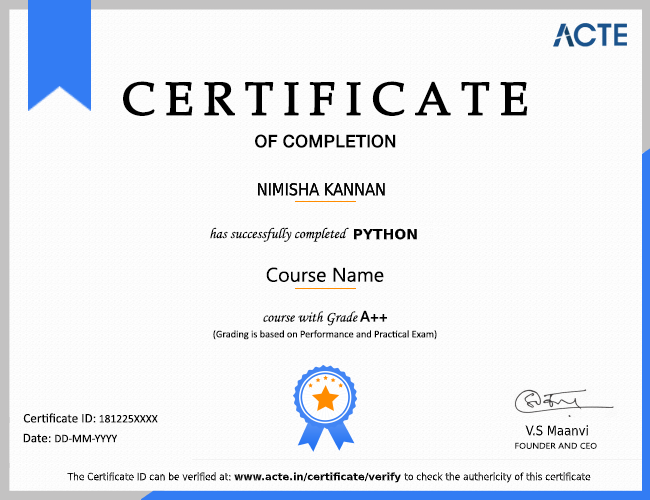OpenShift Administration is a lab-primarily based totally route that teaches gadget directors the way to install, configure, and control OpenShift Container Platform clusters. OpenShift is a containerized software platform that lets establishments control box deployments and scales their packages with the use of Kubernetes.
Additional Info
About OpenShift Administration Training
- OpenShift Administration is a robust platform for businesses that are based on Kubernetes and offers many value-added features, tools, and services that help optimize the entire end-to-end container development and deployment lifecycle.
- This introductory course is designed to quickly familiarize you with the most important functions of OpenShift. As a developer-friendly, enterprise-class container platform, OpenShift enables developers to innovate and deliver applications to production faster. Features and Self-Service An application-oriented web console (UI) enables developers to quickly code, deploy containers, and binding services.
- With a hands-on approach, our OpenShift Administration training aims to give high-quality instruction that provides a firm foundation of the core ideas. Engaging with current industry use cases and scenarios in this way will help students expand their skills and carry out projects in real-time using best practices.
- Business units can use OpenShift Administration to host their applications in the cloud without having to worry about the underlying operating system. This makes it very simple to use, build, and deploy cloud apps. For all forms of development and testing, managed hardware and network resources are available. With OpenShift, the PaaS developer has complete control over the requirements.OpenShift offers several types of SLAs when it comes to service plans:
Free: This plan is limited to three years with 1 GB of storage space each.
Bronze:This plan is 3 years and can be extended to 16 years with 1 GB of storage per year.
Sliver - This is a 16-year bronze plan, but it has 6GB of storage at no additional cost.
- OpenShift Administration online training offers support for self-service, multilingualism, automation, and collaboration. And in terms of design, it's standards-based, web-scale, open-source, and enterprise-grade. You can think of OpenShift as a PaaS or Platform as a Service offering, which means you can use it to host and run your own applications and workloads. The underlying physical infrastructure is being withdrawn from you, so that you, as an application developer, cannot. You don't have to worry about starting servers, installing hard drives, and so on. However, OpenShift comes in several product versions, some of which are designed as stand-alone solutions and therefore require some kind of infrastructure to function. Commissioning must take into account the underlying physical infrastructure. Instead, application developers work with container abstractions such as pods, replica sets, deployments, and more to implement their own workloads. As mentioned above, OpenShift is provided in several versions, each of which is slightly different and optimized for a specific use case.
- OpenShift Administration was born from its base called OpenShift V2, which is mainly based on the concept of year and cartridges, with each component having its specifications from building the machine to implementing the application, from designing to implementing the app.
Cartridges :
They were the focus of creating a new application based on the type of application the environment requires to run and any dependencies met in this section.
year :
It can be defined as the bare metal machine or the server with certain specs in terms of resources, memory, and CPU. They were seen as the basic unit for running an application.
Application: They simply refer to the application or any integration application that is deployed and running in the OpenShift environment. As we dig into this section, we'll discuss the various OpenShift offerings and formats. In the early days, OpenShift had three main versions.
OpenShift Origin : This OpenShift Administration online training was the community addition or open-source version of OpenShift. It was also known as the starting project for two other versions.
OpenShift Online: This is a public PaaS-as-a-Service hosted on AWS.
OpenShift Enterprise : This is the hardened version of OpenShift with ISV and provider licenses.
- The OpenShift Container Platform is a company platform that helps several teams, such as IT operations and development, to set up and deploy a containerized infrastructure. Cloud platforms. The OpenShift Administration online Course container platform was formerly known as OpenShift Enterprises. It is an on-premises private platform as a service from Red Hat, based on the core concept of application containers supported by Docker, with orchestration and administration managed by Kubernetes. OpenShift brings Docker and Kubernetes together at the company level. It is a container platform software for business units to provide and manage requesters on an infrastructure of their choice, for example by hosting OpenShift instances on AWS instances.The OpenShift Container Platform is available in two package levels.
- OpenShift Container Local -
This is intended for developers who want to deploy and test applications on the local computer. This package is mainly used by development teams to develop and test applications.
- OpenShift Container Lab -
is designed for advanced application assessment from development to deployment in the preproduction environment.
Roles and Responsibilities of OpenShift Administration
As an OpenShift administrator, you will be involved in all aspects of the deployment lifecycle including the estimation, technical design, deployment, documentation, testing, deployment and support of the application developed for our customers. Leading solution architects and leaders in development activities.
Required Skill of Openshift
Must have over 8 years of expertise in the field of information technology.
- At least 2+ years of industry experience working with cloud technologies and managing devops functions for complex systems.
- Experience in the implementation of microservices in OpenShift Cluster or Kubernetes or Docker.
- Knowledge of Jira and Confluence.
- Experience in virtualization infrastructure. Experience with the CI/CD pipeline is a plus.
- You have network experience and understanding of network protocols, DNS, VPN and load balancing.
- You have specific knowledge of AWS EC2, ELB, VPC, NACL, CloudWatch, ALB, etc. resources.
- Knowledge of using API TIBCO Mashery or another open-source API tool.
- Has experience with shell scripting, Python.
- Experience in infrastructure implementation as code with Ansible / Terraform.
- Good knowledge of Spring Boot and Spring MVC.
- Knowledge of the JFROG artifact.
- Sound experience in Redhat Linux
Tools of OpenShift Administration
We analyze the key observability data you need to track in order to monitor the health and performance of your OpenShift environment. In general, this includes cluster health data, resource usage metrics, and information about cluster activity, e.g. B. Cluster events and control plane metrics. This post shows you how to access this information using tools and services that come with a standard OpenShift installation.
In particular, we'll show you how to:
1.Perform more detailed monitoring and analysis using the OpenShift web console.
2.Run command line spot checks on your cluster metrics.
3.View the OpenShift control plane and pod logs and events.
Integration Module
OpenShift offers an integrated DevOps approach that includes tools for development teams to build and deploy microservices-based applications. OpenShift.io also offers a Linux container environment and a machine learning system that helps developers make design decisions.
- Trigger Red Hat OpenShift build jobs from ServiceNow catalog requests, change requests, incident requests, and more.
- Accelerate the adoption of Red Hat OpenShift Container Application Platform as the container platform of choice.
- Enable ServiceNow teams to post IT automation requests fulfill through OpenShiftM
- Simply assign field values in the ServiceNow registry and pass them as arguments to the OpenShift build job
- Use best-of-breed integration methodology to integrate different domain tools
- Receive fully compliant integration based on Best practices in specific domains
Key Features ofOpenShift Administration
OpenShift Administration supports a variety of functions, some of which are:
- Multi-language support
- Multi-database support
- Scalable ink cartridge system
- Source code version control
- OneClick implementation
- Multi-environment support
- Dependency management and compilation
- Auto-scaling applications
- Responsive Internet Console
- Advanced command-line
- Remote application via SSH
- Remaining API support
- On-demand self-service application stack
Advantages of OpenShift Administration
1.CI/CD and Repositories
A good Continuous Integration and Delivery (CI / CD) process is a driver for a successful software development pipeline. Strictly speaking, the code repositories and the CI / CD toolchain live outside of the location of your Kubernetes-based business applications. they are a central part of the entire software development lifecycle. OpenShift addresses the need to implement end-to-end CI / CD pipelines and provides developer tools that enable them to program, test, and deploy their application in production, which is essential to creating business value power.
2. OpenShift Monitoring and Logging
The ability to monitor the workload of an application and collect the logs in a central location is a part of any system that follows basic best practices. Depending on the environment (cloud or on-prem) in which your application is running, the way in which you implement it can vary. When a developer needs to integrate certain tools into the environment in which OpenShift is deployed, such as AWS CloudWatch or Azure Monitor, it becomes difficult to make their system applications portable between environments.
3. The Benefits of OpenShift Security
One of the main reasons why corporate customers use OpenShift instead of Kubernetes is the enterprise-class features, which often also mean that the expectations and requirements for security and compliance are naturally higher.OpenShift lives up to this expectation. In fact, Red Hat engineers are quite active in moving security fixes to the Kubernetes upstream repository so that everyone can benefit from them as soon as possible. This is a huge benefit as it can take a while. before the next Kubernetes release and make these fixes generally available. With OpenShift, these security fixes are delivered to customers immediately.
4. Developer Experience and Cost Management Developer Experience
A complex container-based application, there are a variety of projects designed to make the developer experience as seamless as possible. With OpenShift you get a fully equipped Kubernetes cluster. All Kubernetes-related tools are OpenShift compatible. Red Hat has also enhanced the developer experience by providing complementary CLI tools and a web-based user interface. Cost Management Having a complete overview of operating costs is part of a modern software development process. With OpenShift, developers can access cost information down to the project level and across public institutions and environments via the customer portal.
5.OpenShift Hybrid Architecture and Cloud Enablement
Although OpenShift is primarily associated with non-cloud environments, understand that its potential extends well beyond your on-premises data center. In addition to having a self-managed on-premises environment, OpenShift customers can opt for the Deployment and operation in AWS or Microsoft Azure Public Clouds (note that there is currently no OpenShift managed service for Google Cloud). This approach facilitates the transition from the local to the public cloud or the operation of a workload on a hybrid cloud architecture.
Certification of OpenShift Administration
The OpenShift Administration online Course is your advantage to enter the world of IT and start your work at one of the leading companies with Red Hat. With this training, you will be able to install and use the Red Hat OpenShift container platform. are struggling to cope with explosive data growth while remaining agile and cost competitive. To manage petabytes of data at the speed modern businesses need, companies are turning to cloud technology to store their data. As a self-healing and self-managing platform with no single point of failure, Openshift significantly reduces the costs of storing corporate data in the cloud and helps companies to automatically manage their exponential data growth.
Payscale of OpenShift Administration
In India, the national compensation for an OPENSHIFT ENGINEER is 1400k per year. To view OPENSHIFT ENGINEER salaries in your area, filter by location. Salary estimates are based on 1 OPENSHIFT ENGINEER salaries submitted anonymously to Glassdoor by OPENSHIFT ENGINEER employees.
































